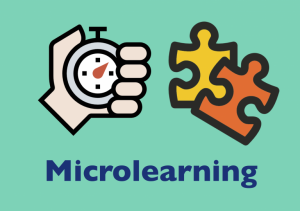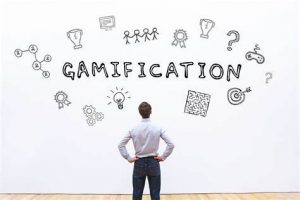10 Strategies for Improving Learning Engagement and Motivating Learners
Ensuring that learners remain engaged and motivated throughout the learning process can be a challenge in today’s fast-paced and easily distracted world. Improving learning engagement is therefore essential.
Whether you’re working in corporate training or as an educator, it’s important to have effective learning engagement strategies in place. By utilizing the right tools and techniques, you can enhance the learning experience and make your training more successful.
In this article, we’ll explore ten effective tools that you can use to improve learning engagement and help your learners stay motivated.
Customized learning paths
Personalization: Tailoring the learning experience to each learner’s needs and interests can increase engagement. By understanding your learners’ goals and preferences, you can create training that feels relevant and useful. For example, if you’re designing a sales training course, you can customize the content based on the different types of salespeople in your organization, such as those who work in retail versus those who work in B2B sales.
Interactive video elements
Interactive Videos: Adding interactive elements to videos, such as quizzes, clickable links, or decision points, can engage learners and reinforce learning objectives. This can help to keep learners engaged throughout the video and provide opportunities to apply their knowledge. For example, a compliance training video can include a quiz at the end that tests learners’ knowledge and understanding.
Gaming for learning
Gamification: Incorporating game elements, such as badges, points, and leaderboards, into the learning experience can increase engagement and motivate learners. Games can provide learners with a sense of accomplishment and a fun way to practice their skills. For example, a cybersecurity training course can include a simulated phishing attack that rewards learners for identifying and reporting the suspicious email.
Bite-sized modules
Microlearning: Breaking down the learning content into bite-sized modules that can be consumed in short bursts can increase engagement and retention. Microlearning can also help learners fit training into their busy schedules. For example, a time management course can be broken down into short, focused modules that can be completed in a few minutes each.
Real-world simulations
Simulations: Providing simulated real-world experiences can increase engagement and enable learners to practice their skills in a safe environment. Simulations can be especially useful for complex or risky tasks where learners need hands-on practice. For example, a leadership development course can include a simulation where learners must make decisions and manage a team in a virtual workplace.
Collaborative learning environments
Social Learning: Providing opportunities for learners to interact with each other and share their knowledge and experiences can increase engagement. Social learning can also create a sense of community among learners and provide them with support and feedback. For example, a diversity and inclusion training course can include a discussion forum where learners can share their perspectives and insights.
Professional network connections
Personal Learning Networks: Encouraging learners to connect with other professionals in their field and learn from their experiences can increase engagement. Personal learning networks can also provide learners with ongoing learning opportunities beyond formal training. For example, a marketing course can provide resources and guidelines for learners to create their own personal learning networks, such as joining relevant online communities and attending industry events.
Virtual elements added
Augmented Reality: Adding virtual elements to real-world environments can increase engagement and enable learners to visualize complex concepts. Augmented reality can be especially useful for technical or visual tasks where learners need to see how things work. For example, a construction safety training course can use augmented reality to provide visual cues and warnings about potential hazards on a job site.
Hands-on learning experiences
Experiential Learning: Providing hands-on, immersive experiences can increase engagement and enable learners to practice their skills in a real-world context. Experiential learning can be especially useful for skills that require physical practice or sensory input. For example, a customer service training course can include a role-playing exercise where learners act out different scenarios with simulated customers.
Anonymous learning option
Anonymous Learning: Providing the option for anonymous learning can increase engagement for learners who may feel more comfortable asking questions or contributing to discussions without the fear of being judged or identified. This can lead to more open and honest communication and foster a more collaborative learning environment.
In conclusion, improving learning engagement is essential for the success of any training program. By using the tools and strategies listed above, you can create a more effective and engaging learning experience for your learners. Remember to tailor your training to your learners’ needs, incorporate interactive and immersive elements, and provide ongoing support and feedback. By doing so, you can help your learners stay motivated and achieve their learning goals.

Download free L&D content

Free eBook: Blended Learning
Blended Learning. Solved in one solution. Get the right blend of modern and traditional learning. Why Blended Learning is important? What works for one employee
Modern L&D Strategy by Nick van Dam
Download a free copy of our best-selling eBook with the newest trends in Learning & Development strategy by the former Global Chief Learning Officer at McKinsey & Co.

Free Learning & Development content

Optimizing L&D for Hybrid Workforces: Best Practices and Success Stories
In the contemporary corporate world, the emergence of hybrid workforces has heralded a significant paradigm shift in how organizations operate. For Learning and Development (L&D), this shift brings about unique challenges and opportunities. This article is your guide to navigating the complexities of hybrid workforces, offering comprehensive insights, practical tips, and inspiring success stories.

10 Strategies for Improving Learning Engagement and Motivating Learners
How can you keep your learners engaged and motivated? Whether you’re working in corporate training or as an educator, it’s important to have effective learning engagement strategies in place. By utilizing the right tools and techniques, you can enhance the learning experience and make your training more successful.

How to maximize employee engagement in L&D while minimizing costs
mployee engagement in learning and development (L&D) programs is crucial for the success of any organization. Engaged employees are more productive, more motivated, and more likely to stay with the company. However, with tight budgets and limited resources, it can be challenging for organizations to create L&D programs that engage employees while minimizing costs. In this article, we explore strategies for maximizing employee engagement in L&D programs while minimizing costs.












































